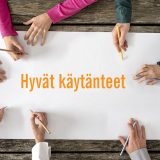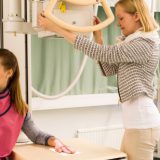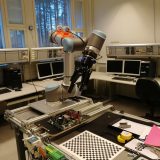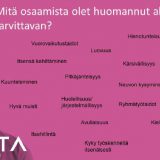Sustainable Pesticide Use – Why and How?
The title above was the title of the final presentation I prepared with my international team when participating in Training course on Plant Protection Products (PPP) in Berlin from 29.08.2016 to 01.09.2016. The training was organized by the Health & Consumer protection Directorate (DG SANTE) of the European Commission which organizes training courses on food and feed law, animal health and welfare and plant health rules.
The title above describes precisely the focus of the training. The aim of the training was to provide an updated knowledge platform to participants who will be dealing with activities related to the training of users and distributors of plant protection products (pesticides) in compliance with Article 5 and 6 and Annex I of Directive 2009/128/EC (Sustainable Use Directive, SUD), following a ”train the trainer” approach.
The main tools to achieve the targets of SUD are:
-
Training
-
Information
-
Awareness
-
Reduction of risks and preservation of natural resources
-
Integrated practices
-
Measuring the performance
The Finnish Ministry of Agriculture and Forestry published Finland’s National Action Plan for SUD in March 2011. The objective of the plan is to reduce risks and impacts of pesticide use on human health and the environment. The plan sets targets, measures and timetables for achieving the sustainable use of plant protection products as required under SUD. The Directive has been implemented nationally by the new Finnish Act on Plant Protection Products (1563/2011). The Act stipulates that the Finnish Safety and Chemicals Agency (TUKES) is responsible for drafting and executing the National Action Plan in collaboration with plant protection professionals and public authorities.
The National Action Plan takes account of the health and safety of pesticide users, bystanders and consumers as well as environmental protection. Individuals who use pesticides in their work in trade, agriculture, forestry and green spaces play an important role in this respect. Training will be provided to these professionals and they will be required to become certified and to observe the general principles of integrated pest management (IPM). Professional users will also be required to have their pesticide application equipment inspected. In the Department of Natural Resources in OUAS we have three authorized training and certification providers since 2013. Thus we have the right to organize trainings not only for our students but for the professional users as well.
Sustainable plant protection is promoted by means of integrated pest management. IPM involves evaluating all available plant protection methods and integrating appropriate measures. The aim of integrated pest management is to prevent harmful organisms by means such as crop rotation, tillage techniques and the use of healthy seeds. This means a move away from routine use of plant protection products to a system where pesticides are only applied as and when required. Regular monitoring of pests allows farmers to choose the correct method of pest control and to apply it at the right time. Many farmers in Finland are already familiar with the principles of IPM and training courses of PPP because of the Agri Environmental Programs since 1995. In that case we in Finland have been forerunners among the European countries.
The scope of the training course was to “train the trainers” and in that respect it was successful. During the training course:
-
we were informed of the latest information and updated knowledge regarding training for the sustainable use of the plant protection products
-
we worked in groups with case-studies provided by the tutors
-
we discussed and exchanged views on our national approaches in several topics like legal requirements, the safe use, environmental aspects and sustainable use of PPPs.
In the group of 32 people and 19 European nationalities the most fruitful experience was the opportunity to exchange knowledge and practices in different countries. It was also interesting to notice both the similarities and differences concerning sustainable practices in European countries. Even though IPM is not a new method in agronomics its importance is increasing everywhere. The objective of IPM is to ensure safe food and feed, safe environment and safety for professional users. Moreover it has financial effects. By following the principles of IPM farmers can save in the costs of plant protection products.
Even though the training course was organized perfectly I would have expected examples of practical solutions. Some excursion, field trip or farm visit would have been “a cherry on the cake”.
More information:
European Commission
http://ec.europa.eu/food/plant/pesticides/index_en.htm
http://ec.europa.eu/food/plant/pesticides/sustainable_use_pesticides/
Finnish Safety and Chemicals Agency (TUKES)
http://tukes.fi/fi/Toimialat/Kemikaalit-biosidit-ja-kasvinsuojeluaineet/Kasvinsuojeluaineet/
Kaija Karhunen, senior lecturer
OUAS, Natural Resources
Working in groups
Short visit to The Brandenburg Gate
Photos Marius Flintoaca












